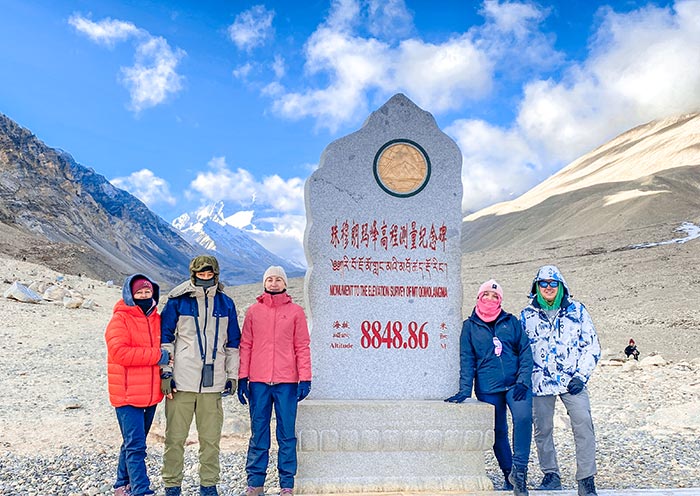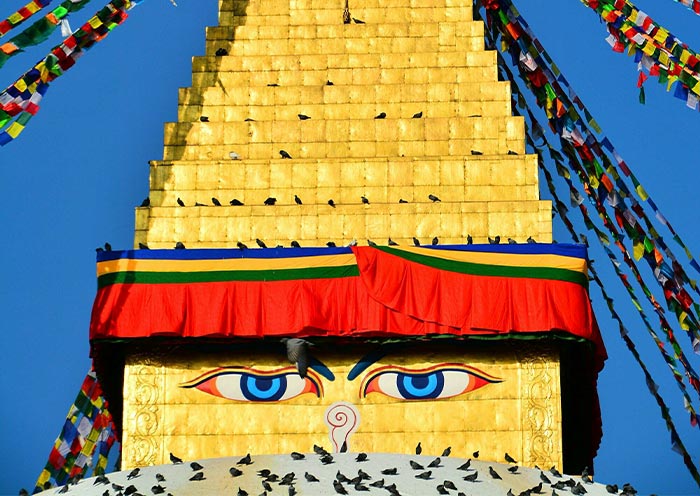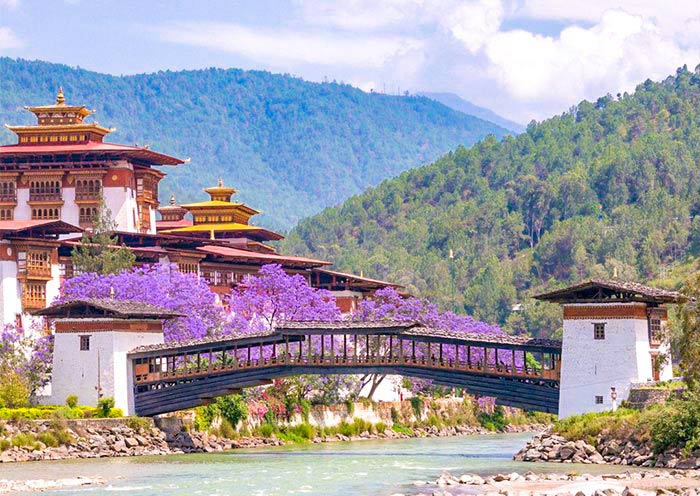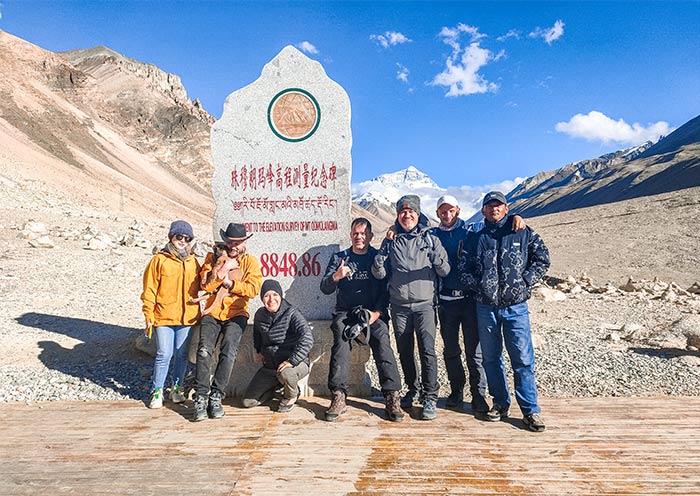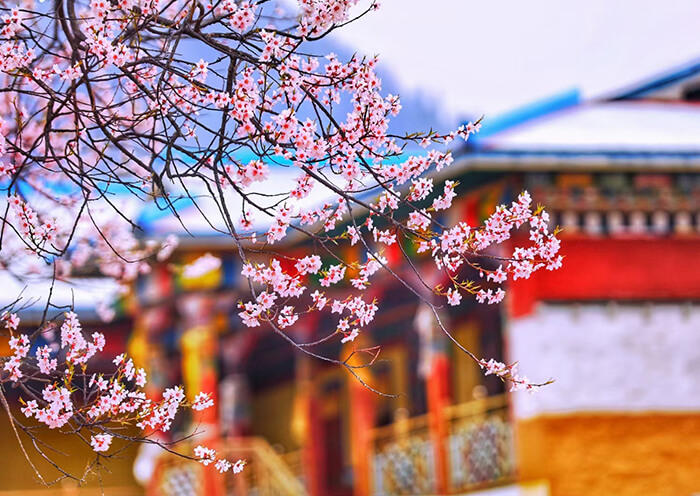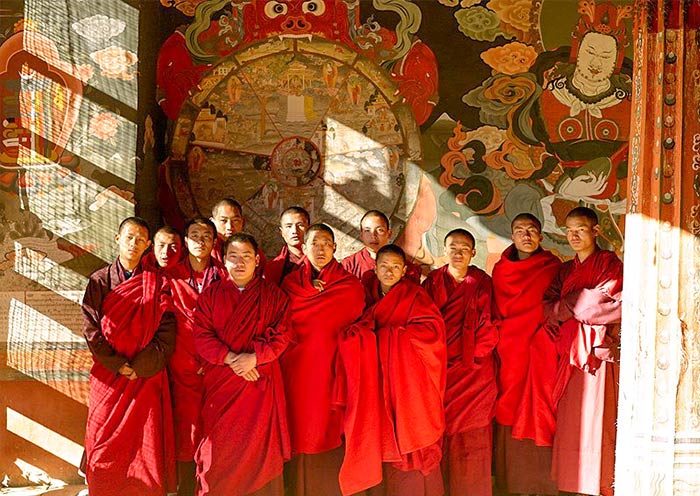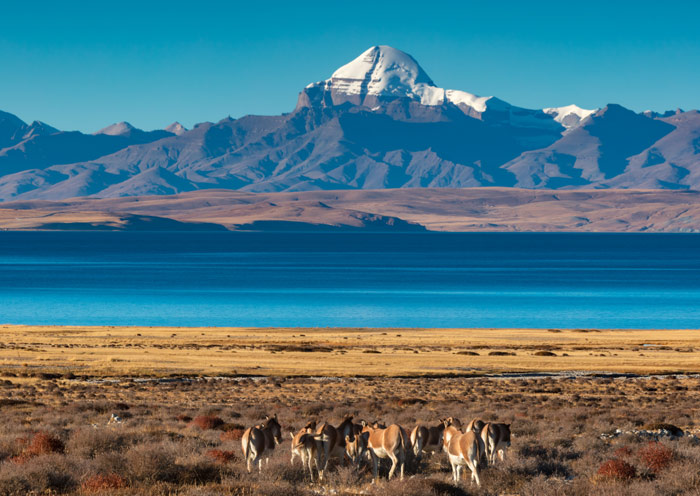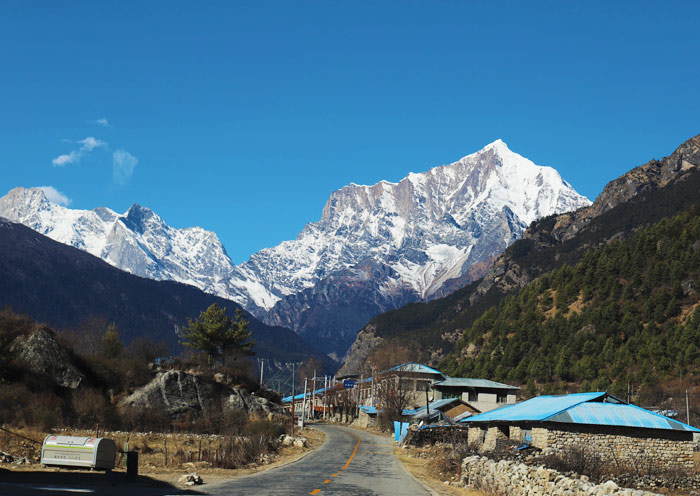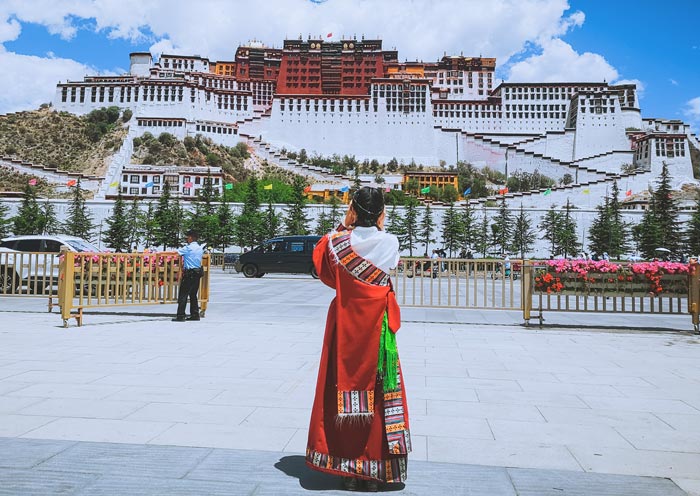Enter Tibet from Mainland China
What Travel Permits Do I Need?
- Chinese Visa:
Before entering Tibet from mainland China, you will need to obtain a valid Chinese visa from the Chinese embassy or consulate in your home country or in a third country. The type of visa will depend on your nationality and the purpose of your visit.
- Tibet Travel Permit:
Foreign travelers planning to visit Tibet from mainland China will also need to obtain a Tibet Travel Permit (TTP) through a registered travel agency. The permit is required to enter Tibet and travel within the region.
- Additional Permits:
In some cases, depending on the specific areas you plan to visit in Tibet, additional permits, such as the Aliens' Travel Permit (ATP) or the Military Permit, may be required. These permits are usually organized by the travel agency.
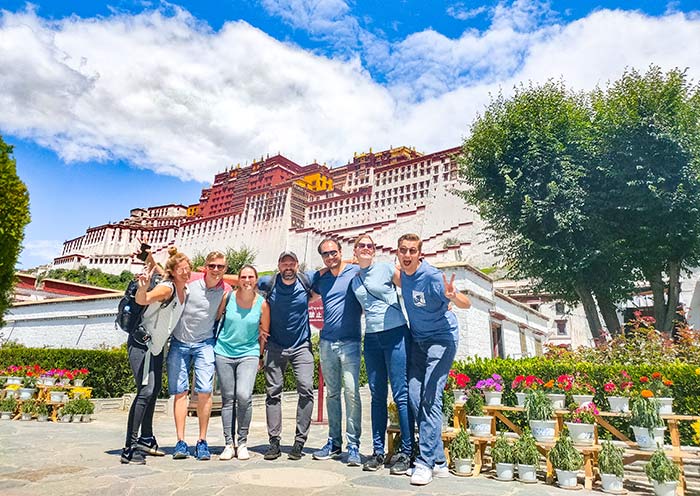
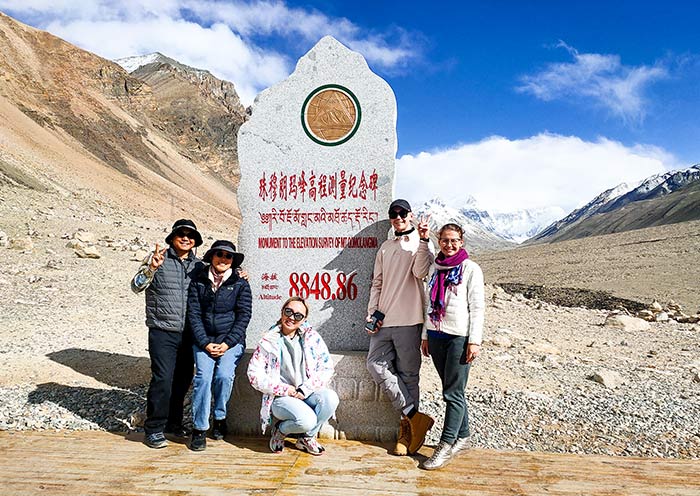
Permits tips when entering Tibet from Mainland China:
- The 144-hour visa-free transit policy, which allows eligible travelers to stay in certain regions of China without a visa for up to 144 hours, does not apply to travel to Tibet.
- Tibet Travel Permit is required to board the flight or train to Tibet.
- Allocate extra time for the PTT process and document delivery to your designated entry city in Tibet due to potential delays. Book a Tibet tour with us at least half a month in advance.
How to Get to Tibet from Mainland China
The most common way to enter Tibet from mainland China is by air or train. Several major cities in China, such as Beijing, Shanghai, Chengdu, and Xi'an, have direct flights or train connections to Lhasa. Check more information about China Tibet Tous >>
- Overland via Sichuan-Tibet Highway (G318):
The Sichuan-Tibet Highway, also known as G318, is a popular route for traveling to Tibet by road. This scenic highway starts from Chengdu in Sichuan Province and passes through various breathtaking landscapes before reaching Lhasa, the capital of Tibet. It offers a unique and adventurous journey, allowing you to witness the stunning beauty of the Tibetan plateau along the way within 7-11 days. Check the itinerary about Chengdu Lhasa Overland Tour>>
- By Train:
The Qinghai-Tibet Railway is the world's highest railway and provides a convenient and comfortable option for reaching Tibet. There are several train routes that connect major cities in mainland China, such as Beijing, Shanghai, Chengdu, and Xining, to Lhasa. The Tibet train journey will last 20-50 hours depending on the boarding cities. It offers breathtaking views of the Tibetan plateau and allows you to gradually acclimatize to the high altitude. It's advisable to book train tickets in advance, as they tend to sell out quickly, especially during peak travel seasons from June to September.
Check more details about Tibet Train >>
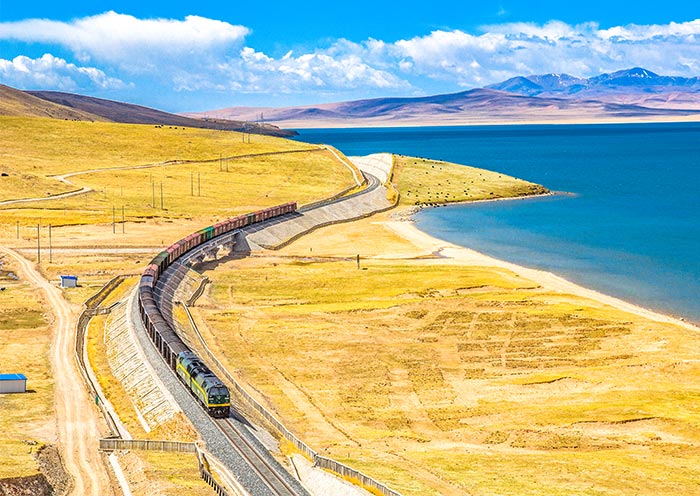
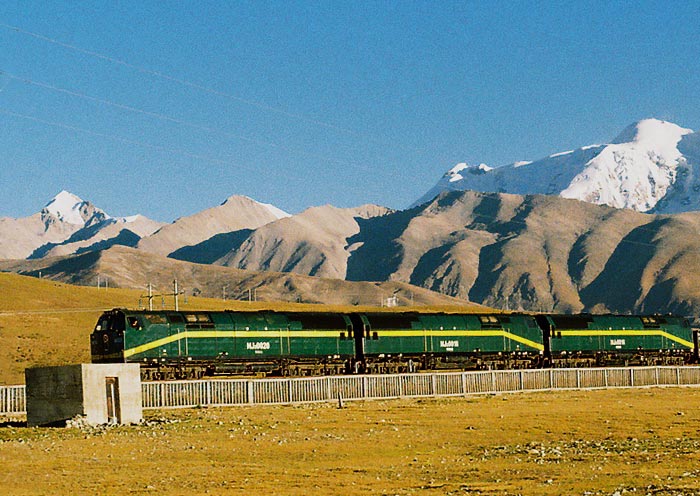
- By Direct Flight to Lhasa, Nyingchi, or Shigatse:
Another way to reach Tibet is by taking a direct flight to one of the airports in the region. Lhasa Gonggar Airport is the most common entry point, with direct flights available from several major Chinese cities, including Beijing(4 hour), Shanghai(5 hour), Chengdu(2 hour), and Xi'an(3 hour). Additionally, there are also airports in Nyingchi and Shigatse that offer flights to and from select destinations, such as Chengdu and Chongqing. Flying is the fastest and most convenient option, especially if you have limited time for your trip.
Transportation tips when entering Tibet from Mainland China:
- Qinghai-Tibet Railway: The Qinghai-Tibet Railway operates at a speed of 80-120 km/h, which is relatively slower compared to modern high-speed trains.
- Sichuan-Tibet Highway: The Sichuan-Tibet Highway is renowned as one of China's most beautiful scenic routes. The road has varying altitudes and offers unparalleled landscapes throughout the journey.
- Flights to Nyingchi: Flights to Nyingchi are limited and usually operate in the morning. Nyingchi, with an average altitude of less than 3,000 meters, is relatively lower in altitude compared to other areas in Tibet. This lower altitude may result in fewer noticeable symptoms of altitude sickness, making it a favorable entry point for some travelers.
Travel to Tibet from Nepal
What Travel Permits Do I Need?
- China Tourist Group Visa:
When entering Tibet from Nepal, you will first need to obtain a China Tourist Group Visa from the Chinese Embassy in Kathmandu. This visa is different from a regular Chinese visa and can only be obtained through a registered travel agency, such as Asia Odyssey Travel (AOT). It is typically issued as a group visa, which means you need to travel in a group with a minimum of 4 people. The visa is valid for the duration of your stay in Tibet.
- Tibet Travel Permit (TTP):
The Tibet Travel Permit, also known as the Tibet Entry Permit, is the primary permit required for traveling to Tibet. It is issued by the Tibet Tourism Bureau and is necessary for foreign travelers. You cannot apply for this permit individually. To obtain this permit, you must book a Tibet tour package with a registered travel agency (AOT). We will handle the application process on your behalf, and you need to provide your passport and other necessary documents with us.
- Alien's Travel Permit (ATP):
The Alien's Travel Permit is another permit required to travel to certain restricted areas within Tibet. It is issued by the Public Security Bureau (PSB) in Tibet. We will obtain this permit if your itinerary includes restricted areas like Everest Base Camp or Mount Kailash.
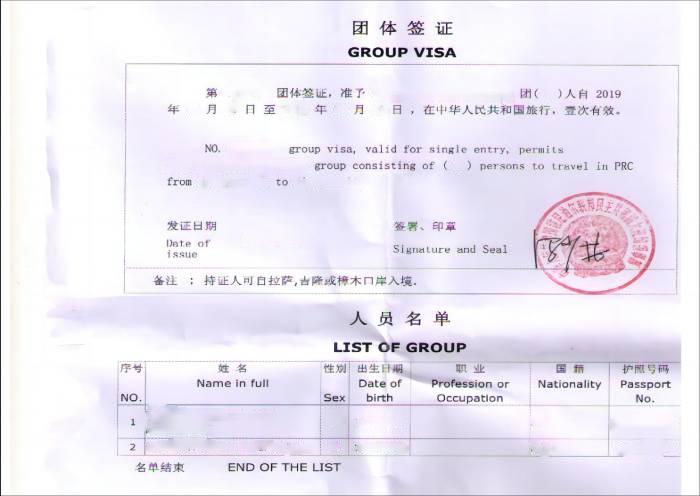
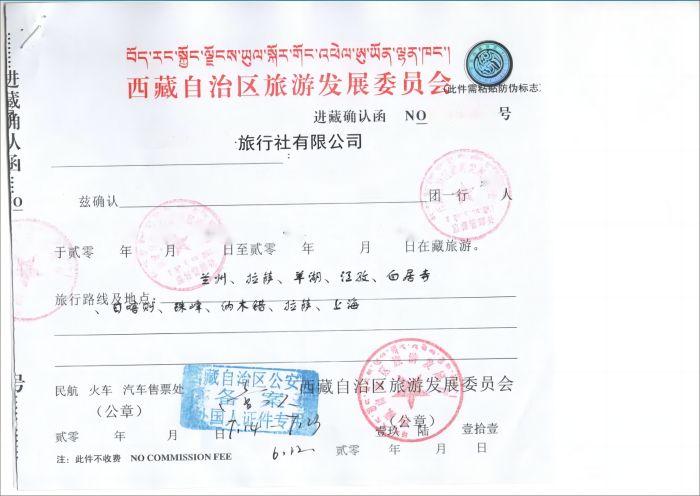
Permits tips when entering Tibet from Nepal:
- Book with a registered travel agency: You must book a tour with a registered travel agency in Tibet, such as AOT. We will handle the permit application process and provide a tour guide for your trip.
- Allow enough time: The permit application process can take several weeks. Plan your trip well in advance to ensure sufficient time for processing and issuance of the permits.
- Travel in a group: To obtain a China Tourist Group Visa, you need at least 4 people traveling together.
- Same Flights: After obtain a China Tourist Group Visa, the member on this group visa must traveling in and out of China on the same flight.
- Provide accurate information: When applying for permits, provide accurate and complete information, including passport details and travel itinerary. Any discrepancies or missing information can cause delays or rejection of your application.
How to Get to Tibet from Nepal
- Overland to Jilong (Kyirong):
One popular option is to travel overland from Nepal to Tibet via the Jilong (Kyirong) border crossing. This route is accessible by road and offers a scenic journey through the Himalayas. From Kathmandu, you can take a bus or hire a private vehicle to reach the border town of Rasuwa Gadhi in Nepal.
It takes approximately 6-8 hours from Kathmandu to reach the Jilong (Kyirong) border. After completing the immigration and customs formalities on the Nepalese side, you will cross the Friendship Bridge and enter Tibet. Upon reaching the border, your Tibetan guide and the local travel agency will welcome you on the Tibetan side of the border. From there, you can continue your journey to destinations like Shigatse and Lhasa.
- Direct flights to Lhasa:
Another option is to take a direct flight from Kathmandu to Lhasa. The flight duration is around 90 minutes, offering a convenient and time-saving option for travelers who prefer air travel. This international flights also offer breathtaking views of the majestic Himalayas and the stunning scenery of the Tibetan Plateau. After arriving in Lhasa, you can explore the city and its surrounding areas or continue your journey to other destinations in Tibet.
Transportation tips when entering Tibet from Nepal:
- Road Conditions: Be aware that during the rainy season, roads can become muddy and prone to landslides and debris flow, potentially causing delays or disruptions.
- Scenic Flight: If flying from Kathmandu to Lhasa, choose a seat on the left side of the plane to enjoy better views of the snow-capped mountains and the high plateau, including Mount Everest.
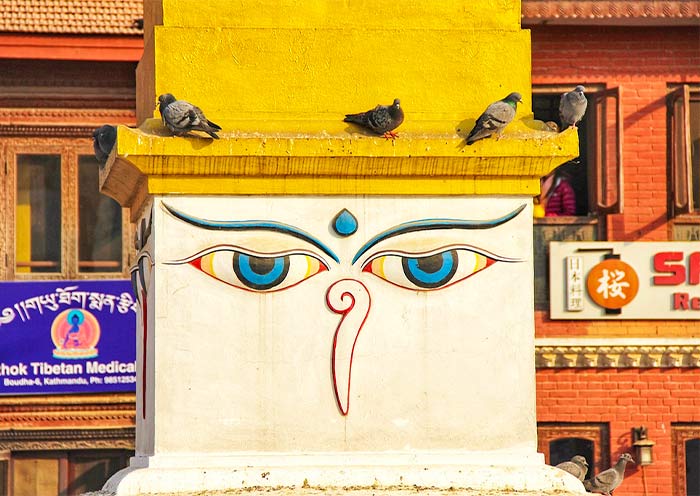
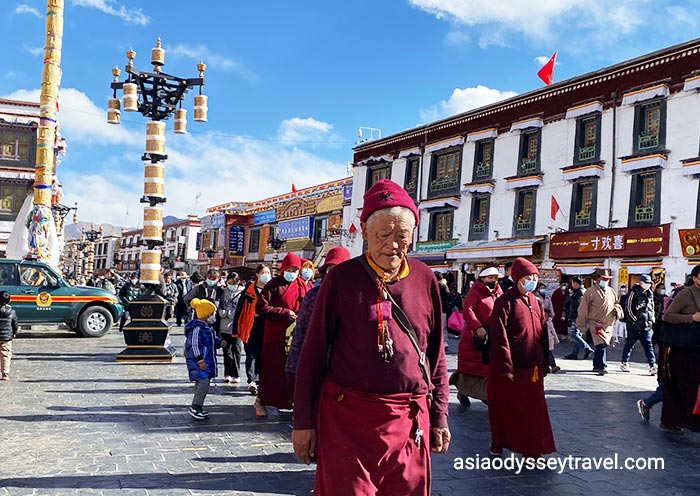
Comparison between Entering Tibet from Mainland China and from Nepal
1. Travel Experience
-
Flight from Kathmandu to Lhasa: Convenient and fast travel, but misses out on the scenic overland journey and cultural experiences.
-
Road trip from Kathmandu to Lhasa via Kyirong: Breathtaking landscapes and cultural immersion, but can be lengthy and challenging due to road conditions and border crossings.
-
Flight from mainland China to Lhasa: Convenient with a wide range of options, but lacks the scenic overland journey and cultural interactions of entering from Nepal.
-
Train ride from mainland China to Lhasa: Unique and picturesque experience with better altitude acclimation, but longer journey and may require advance booking.
-
Road trip from Chengdu to Lhasa via Nyingchi: Picturesque landscapes and exploration of Nyingchi's natural beauty, but challenging road conditions and longer travel time compared to flying or taking the train.
2. Altitude Acclimation
Regardless of how you enter Tibet, altitude sickness is a possibility, with varying degrees of severity and duration of symptoms.
| City | Altitude |
|---|---|
| Kathmandu | 1,400 meters (4,600 feet) |
| Gyirong | 2,800 meters (9,200 feet) |
| EBC in Tibet | 5,200 meters (17,060 feet) |
| Shigatse | 3,840 meters (12,600 feet) |
| Lhasa | 3,650 meters (11,975 feet) |
| Nyingchi | 3,100 meters (10,170 feet) |
| Xining | 2,200 meters (7,200 feet) |
| Chengdu | 500 meters (1,640 feet) |
When traveling by road or train to Tibet, the gradual ascent allows for better altitude acclimation, reducing the risk of altitude sickness. However, the long journeys by road or Tibet train may bring fatigue and discomfort during the trip.
On the other hand, flying to Tibet involves a quicker ascent in altitude. While this may increase the risk of altitude sickness. Flying also provides the opportunity to rest and adjust in comfortable hotels upon arrival, which can be beneficial for some travelers.
Additionally, if you choose to fly directly from mainland China to Nyingchi (altitude: 2,800 meters), there won't be significant symptoms of altitude sickness.
3. Travel Length
-
Flight from Kathmandu to Lhasa: 2.5 hours
-
Road trip from Kathmandu to Lhasa via Kyirong: Kathmandu-Gyirong, 6-8 hours (120km) ; Gyirong to Lhasa via EBC, 2-3 days (950 km)
-
Flight from mainland China to Lhasa: 2-6 hours
-
Train ride from mainland China to Lhasa: Xining to Lhasa, 21 hours (1956km)
-
Road trip from Chengdu to Lhasa via Nyingchi: 7-10 days (2000km)
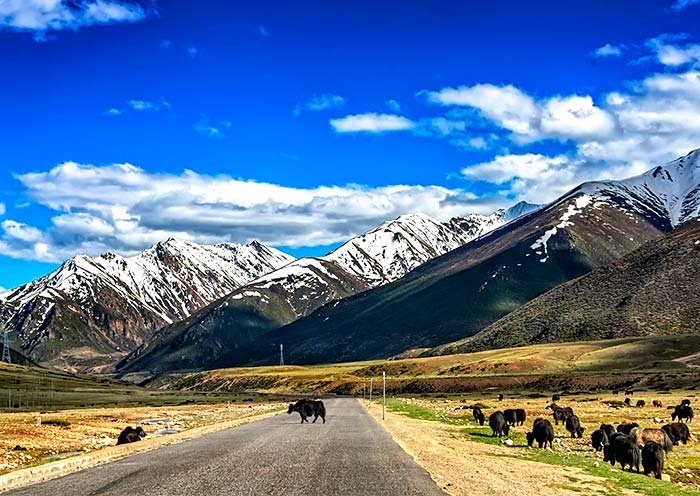
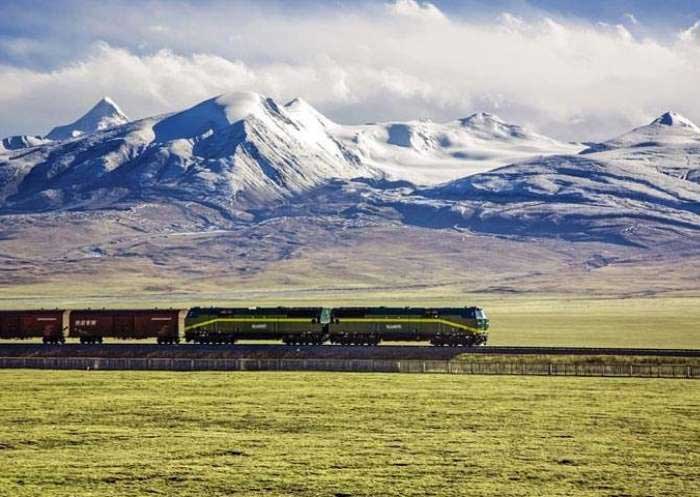
How to Choose? Different Situations with Recommended Itineraries
When deciding whether to visit Tibet from mainland China or Nepal, it's important to consider various factors, including your preferences, travel experience, itinerary, and time constraints.
Mainland China is on Your Travel List - from Mainland China
The itinerary arrangement can be more flexible if your travel plan includes Nepal, Tibet and mainland China. However, it should be noted that if you choose to enter Tibet from Nepal, you must apply for a China tourist group visa for a group of at least 4 travelers, who must take the same flights leaving China.
1) If you are traveling with family and friends, and the number of people reaches 4, entering Tibet from Nepal would be a good choice.
The itinerary mentioned above may match your needs. We also offer different Nepal Tibet Tour Packages to make your journey more secure and comfortable.
2) If you prefer to travel alone or with a partner for a flexible itinerary, it’s suggested traveling to mainland China first, then to Tibet, and finally to Nepal from Gyirong by land.
You can allow ample time to explore cities like Beijing, Shanghai, Xi'an, or Chengdu, each with its own historical, cultural, and culinary delights. It is recommended to spend approximately 2 days in each city to visit the top attractions. Developed high-speed rails in China make multi-city travel more convenient.
- Day 1-2: Arrive in one famous city of China, explore top attractions.
- Day 3-4: Move to another city by High-Speed Train and city sightseeing.
- Day 5: Fly to Lhasa, acclimatizing to the high altitude.
- Day 6-7: Explore Lhasa's top attractions.
- Day 8-9: Travel by overland from Lhasa to EBC in Tibet.
- Day 10-11: Travel from EBC to Gyirong, then enter Nepal, driving back to Kathmandu.
- Day 12-13: Explore Kathmandu top attractions.
We offer Top China Tours, Popular Tibet Tours, and Best Nepal Tours to meet your needs in these areas.
3) If you are traveling alone and are willing to join a group tour, you can enter Tibet either from Nepal or Mainland China.
- Day 1-2: Arrive in one famous city of China, explore top attractions.
- Day 3: Fly to Lhasa, acclimatizing to the high altitude.
- Day 4-5: Explore Lhasa's top attractions.
- Day 6-7: Fly to Kathmandu from Lhasa.
- Day 7-8: Exploring top attractions in Kathmandu.
- Day 9: Depart from Kathmandu.
we offer various China Tibet Nepal Tour Packages to make your time most.
Ultimately, the choice between visiting Tibet from Nepal or mainland China depends on your personal preferences, travel goals, and available time. It's recommended to conduct thorough research, consult with registered travel agencies, and consider the logistics, permits, and overall travel experience when making your decision.
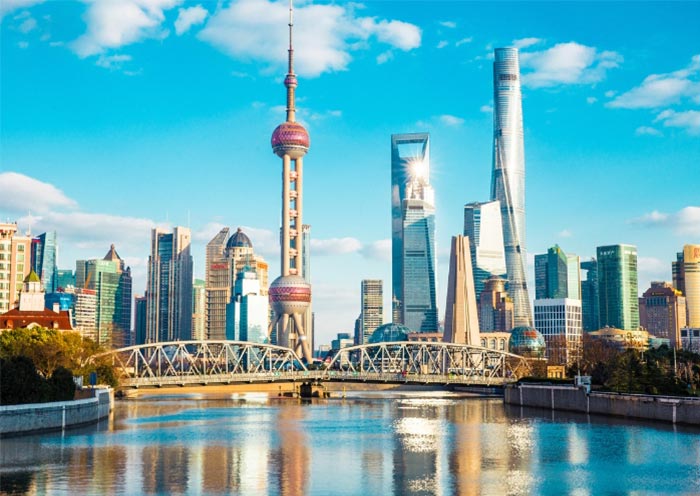
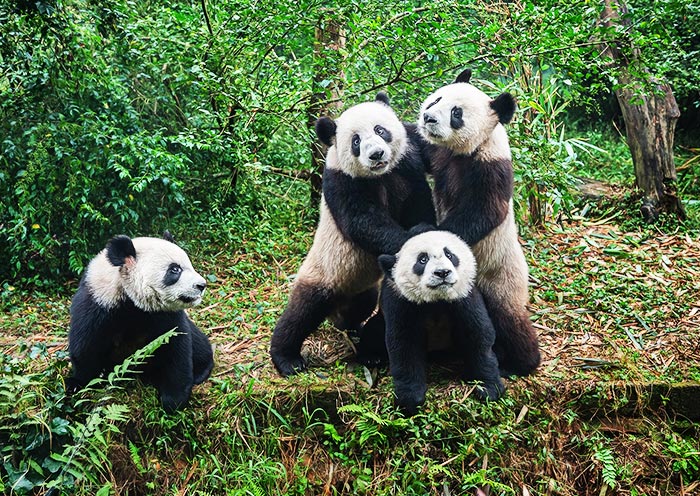
Mainland China isn’t on Your Travel List - from Nepal
If your travel destination does not include mainland China, you’d better travel to Tibet from Nepal, either by overland or by flight. Moreover, after your trip in Tibet, you can return to Kathmandu by land or plane.
1) Kathmandu to Lhasa Double Flight
- Day 1: Arrive in Kathmandu, Nepal. Spend the day exploring Kathmandu Durbar Square and nearby attractions.
- Day 2: Explore Kathmandu's iconic sites, including Swayambhunath Stupa, Pashupatinath Temple, Boudhanath Stupa, and Patan Durbar Square.
- Day 3: Fly from Kathmandu to Lhasa, Tibet. Spend the day acclimatizing to the high altitude.
- Day 4-5: Explore Lhasa's iconic sites, including the Potala Palace, Jokhang Temple, Drepung Monastery, Sera Monastery and Barkhor Street.
- Day 6: Depart from Lhasa.
2) Fly from Kathmandu to Lhasa and return to Kathmandu by land
- Day 1-2: Arrive in Kathmandu, exploring top attractions.
- Day 3: Fly from Kathmandu to Lhasa, acclimatizing to the high altitude.
- Day 4-5: Explore Lhasa's top attractions.
- Day 6-7: Travel by overland from Lhasa to EBC in Tibet.
- Day 8-9: Travel from EBC to Gyirong, then enter Nepal, driving back to Kathmandu.
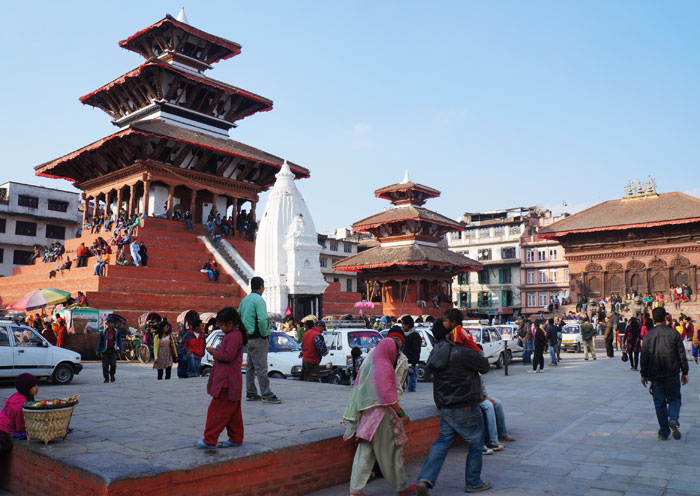
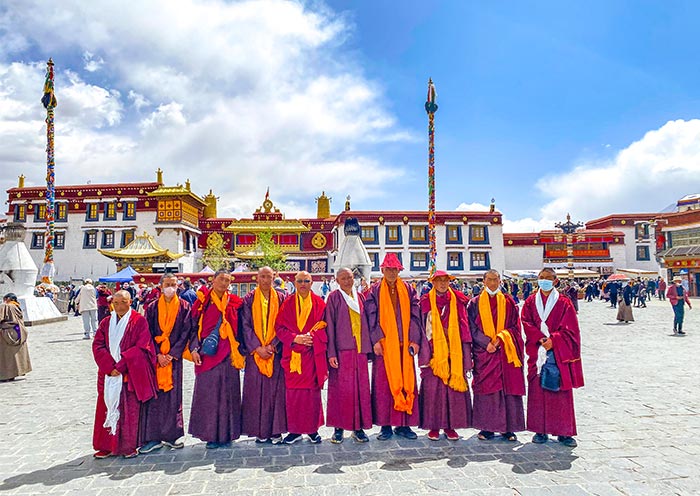
Extend Your Travel in Himalaya
If you wish to visit additional destinations in Himalaya, you will need to allocate more time to accommodate your itinerary. Each region offers a wealth of attractions and experiences that require adequate time for exploration and appreciation.
For a more comprehensive trip, consider the following suggestions:
Nepal (4-10 days):
- Extend your stay in Pokhara to enjoy activities such as paragliding, hiking to Sarangkot, or visiting the Peace Pagoda.
- Embark on a longer trek in the Annapurna or Everest region, allowing for a more immersive experience amidst the stunning Himalayan landscapes.
Tibet (4-10 days):
- Extend your journey to include destinations like Shigatse, Kailash, and Nyingchi, each offering unique cultural and natural attractions.
- Consider a deep visit to the mysterious Ngari to meet the rare wild animals and the ever-changing plateau lakes.
- Experience the remarkable Qinghai-Tibet train to admire Plateau scenery through the window.
Bhutan (4-8 days):
- Explore Bhutan by visiting stunning valleys such as Paro, Thimphu, Punakha, Bumthang, and Haa Valley.
- Attend one of Bhutan's colorful festivals to witness traditional dances, mask performances, and religious rituals.
India (4-8 days):
- Marvel at the iconic white marble mausoleum, a symbol of love and an architectural masterpiece.
- Immerse yourself in the rich history and culture of the "Pink City," visiting palaces, markets, and the majestic Amber Fort.
- Witness the sacred rituals along the Ganges River, explore the narrow lanes of the old city, and soak in the spiritual ambiance of one of the oldest inhabited cities in the world.
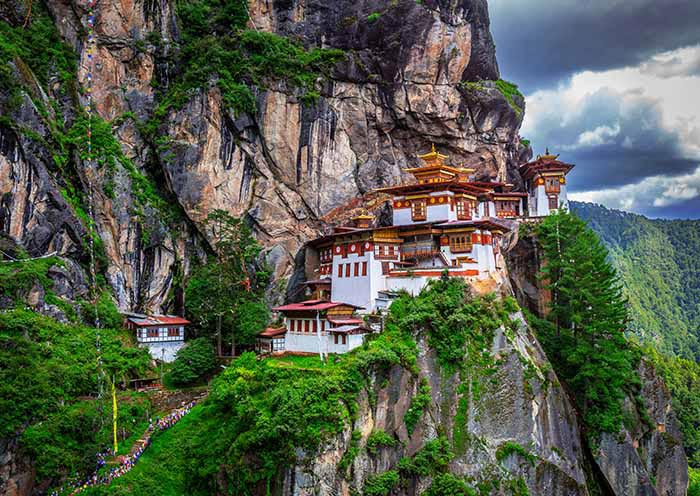
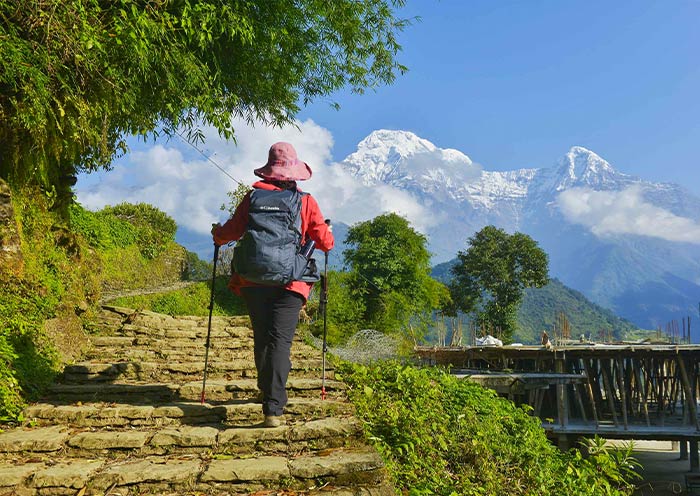
If you have any questions about this article, please contact us by submitting the following form and we'll immediately get back to you.

